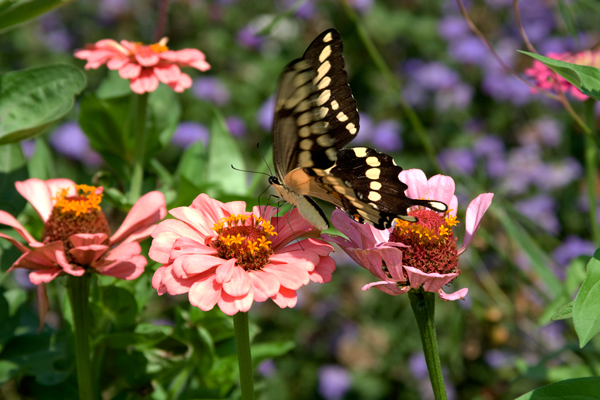
Our pollinator garden displays many different annual and perennial plants that attract a variety of pollinators in our area. Pollinators are an essential part of any ecosystem. Animals and insects that transfer pollen between plants help ensure fertilization, and therefore the continuation of the plant species. In addition, pollinators that transfer pollen from many different communities of plants help propagate genetic variety within the plant species. This genetic variation is essential for plant species to have viable and sustainable futures. Pollinators are on the decline, and many populations are critically threatened. For the continued health of our ecosystems, our agriculture, and our livelihoods, we must protect and cultivate pollinators.

